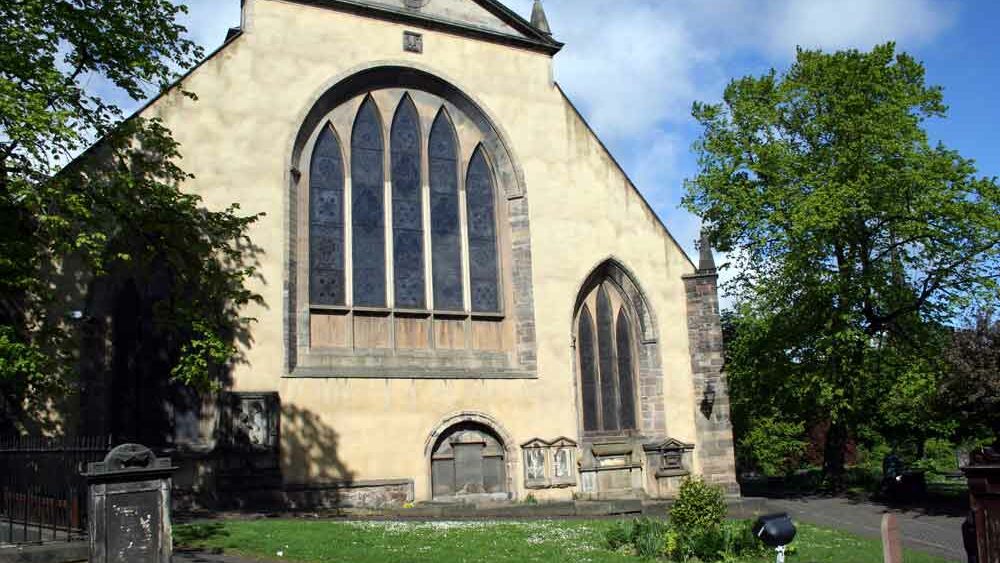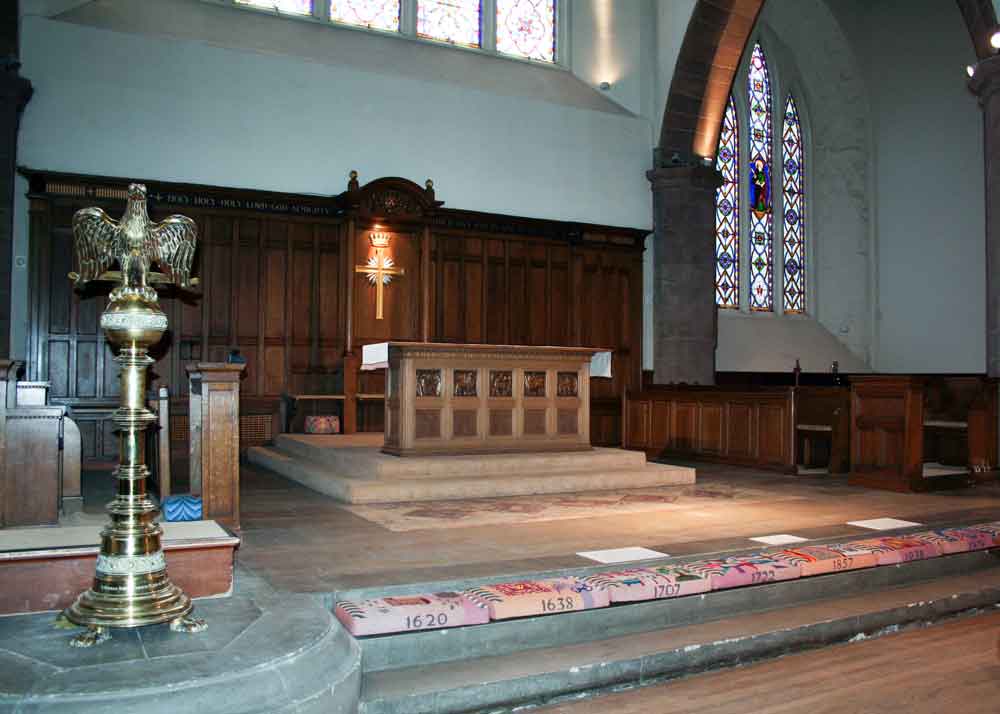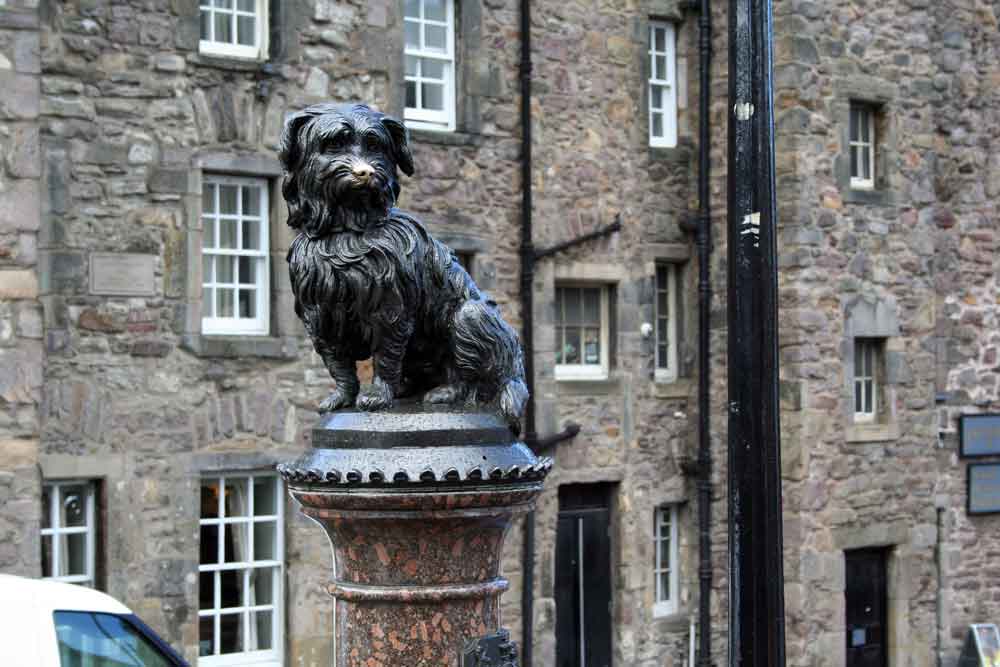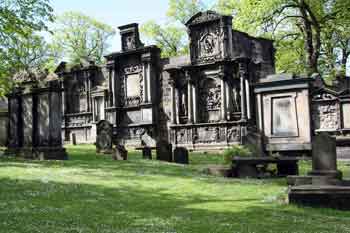
Greyfriars Kirk, also known as Greyfriars Church in Edinburgh’s Old Town was the first church to be built in Scotland after the Reformation of 1560.
It stands on land which once belonged to the Franciscan convent in the Grassmarket.
History of Greyfriars Kirk
Greyfriars Kirk (Church) has a history that dates to the 17th century. This historic church has been at the centre of a number of pivotal moments in Scotland’s history.
As Edinburgh’s population expanded rapidly, “the capacity of the churches was found to be taxed to the upmost…” consequently Edinburgh town council decided that a new church should be constructed.
So, to cut a long and often acrimonious story short, Greyfriars Kirk opened on Christmas day in 1620.

Historic Environment Scotland tells us that “It had an aisled nave of six bays and a western central tower using building materials taken from the ruins of the nearby Convent of St. Catherine of Siena.
National Covenant
Greyfriars Kirk was the site of the signing in 1638 of the National Covenant, a document that demanded religious change in Scotland.
Copies were distributed throughout the country and many of the people who signed took up arms against the king (Charles I).
Oliver Cromwell
The signing of the covenant was part of the process which saw the rise of Oliver Cromwell and the English Civil Wars.
Antonia Fraser in her book Cromwell said of the Covenant, “Framed by lawyers, it appealed essentially to the rule of law, reminded the king of his coronation oath and asserted the supremacy of parliament [over the crown] in appealing to the statures.
” Into these dry bones, the people of Scotland breathed their own vigour in their desire for a national crusade…”
In 1650, following Oliver Cromwell’s victory over a Covenanting army at Dunbar the victorious army approached Edinburgh to be met at the Netherbow gate by citizens who treated for the city’s safety.
Cromwell made himself comfortable at the home of the Countess of Moray in the Canongate, part of the Royal Mile.
However, many of his soldiers used Greyfriars Kirk as a barracks, a home from home where they stayed for three years.
A contemporary witness recorded that Greyfriars, like many other Edinburgh churches “wer all wasted…” this destruction included, pulpites, daskis, loftes, saittes, windois…” However, it seems that the communion plate was saved.
Rather alarmingly Edinburgh Town Council used part of the building to store gunpowder. Perhaps inevitably it duly exploded in 1718 destroying the west end of the church.
The rebuilding created not one complete space but a design that allowed two separate congregations to sit back to back.
In 1845, a fire destroyed much of the church and it wasn’t until 1857 that restoration was complete.
Further restoration of the church took place between 1931 and 1938 and more recently in 1980 when a new organ was installed
Greyfriars Bobby watched over his master’s grave
Perhaps the best-known story of Greyfriars Kirk is the one of Bobby a small dog that 19th century legend tells us that for 14 years until its death watched over the grave of its master John Gray.
Whether Bobby was ever buried within the kirkyard remains a matter of speculation.
A small statue of Bobby set outside the church gates is one of Edinburgh’s popular visitor attractions and on most days people are seen posing for photographs beside it.

Greyfriars Kirk Museum
A small museum set inside the building attracts over 20,000 visitors every year and also plays an important part in the church’s interaction with local schools. Its artefacts tell the fascinating story of Greyfriars Kirk.
Pride of place in the museum is an original copy of the National Covenant but other items include a painting of Greyfriars Bobby and a precious King James VI Bible.
Visitors, particularly from the United States, are often surprised to see an American flag displayed in a quiet corner of the church.
The flag, which once hung in the White House, was a gift to mark the landing of the Pilgrim Fathers in the New World and the opening of Greyfriars Kirk which both happened on Christmas Day 1620.
Note: If it’s important to you, it’s worth checking with the church to make sure the flag is in place before you go.
Events and activities at Greyfriars Church
Central to the church’s community involvement is the Grassmarket Community Project where partners Greyfriars Kirk and the Grassmarket Mission offer a “variety of workshops aimed at developing people’s self-worth, social networks and skills.”
In addition, much of the church’s mission outreach activities take place in the Greyfriars Charteris Centre. The official Charteris website has lots of information
The church holds a wide variety of artistic and other events throughout the year and is a popular venue for locals and visitors alike.
Greyfriars Kirkyard
The neighbouring Greyfriars Kirkyard, today administered by Edinburgh City Council, was placed on land originally granted in 1562 by Mary Queen of Scots for the construction of a cemetery to supplement the ‘overflowing’ graveyard at St Giles’ Cathedral.
The kirkyard, the final resting place for several notable figures, is today associated with stories of paranormal activity.
The spooky atmosphere also inspired J.K. Rowling the author of the Harry Potter series who named some of the characters after names on tombstones she encountered as she walked through the kirkyard.
Covenanter’s Prison
In 1679, following the Battle of Bothwell Brig hundreds of defeated Covenanters (Scottish Presbyterians) were brought to Greyfriars Kirkyard and imprisoned in dreadful circumstances in what is now known as the Covenanter’s Prison.

Read the story of Greyfriars Kirkyard on Truly Edinburgh
Greyfriars Kirkyard, the graveyard surrounding Greyfriars Kirk in Edinburgh’s Old Town stands on land granted to the town council by Mary Queen of Scots in 1562.
Greyfriars Kirk: SUGGESTIONS FOR FURTHER RESEARCH & READING
- Anderson, J., 2020. Burials, Disease & Dark Tourism: A Study of Greyfriars Kirkyard (Doctoral dissertation, Brandenburg University of Technology).
- Li, X., Cao, L. and Ma, Y., 2017, August. The Reconstruction of Greyfriars Kirkyard’s Sacred Space: From the Franciscan Order’s “Divinity Heaven Garden” into the Protestant’s “the Sacred Cemetery”. In IOP Conference Series: Earth and Environmental Science (Vol. 81, No. 1, p. 012115). IOP Publishing.
- The Epitaphs and Monumental Inscriptions in Greyfriars Churchyard, Edinburgh. JM Miller, 1867.
- Bryce, W.M., 1912. History of the old Greyfriars’ church, Edinburgh. W. Green.
Greyfriars Kirk Visitor Information
For information on opening hours, cost of entry and other tips to help you plan your visit, go to the official Greyfriars Kirk website.
- Note: the word kirk meaning church (widely used in Scotland) may have come from the Old Norse word kirkja.